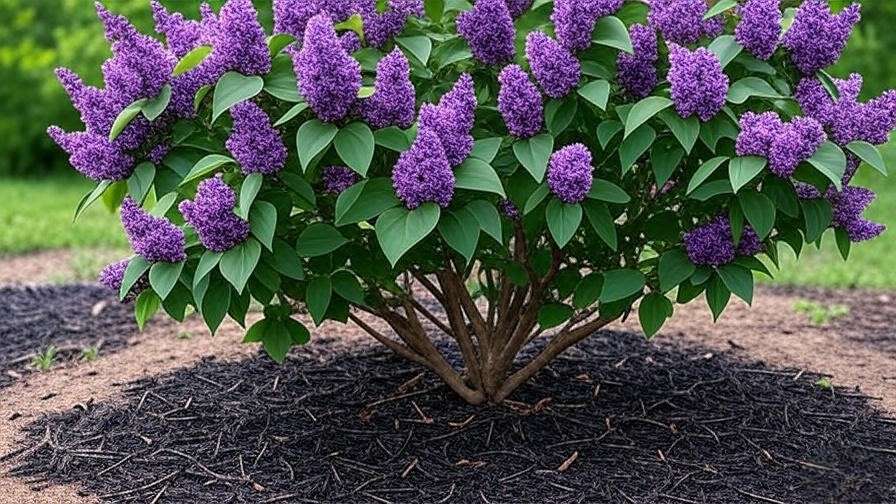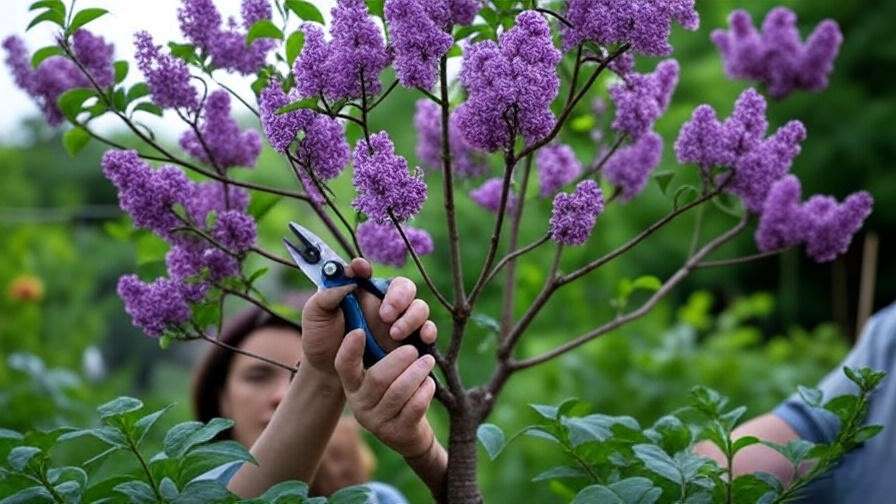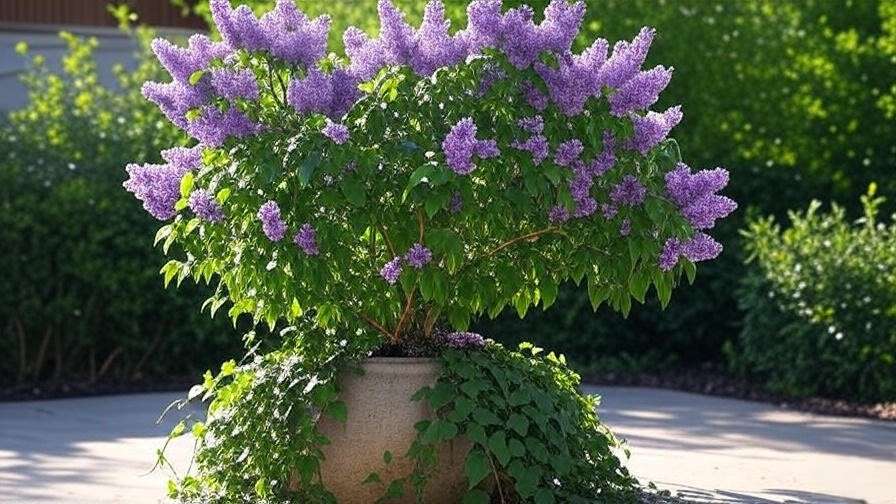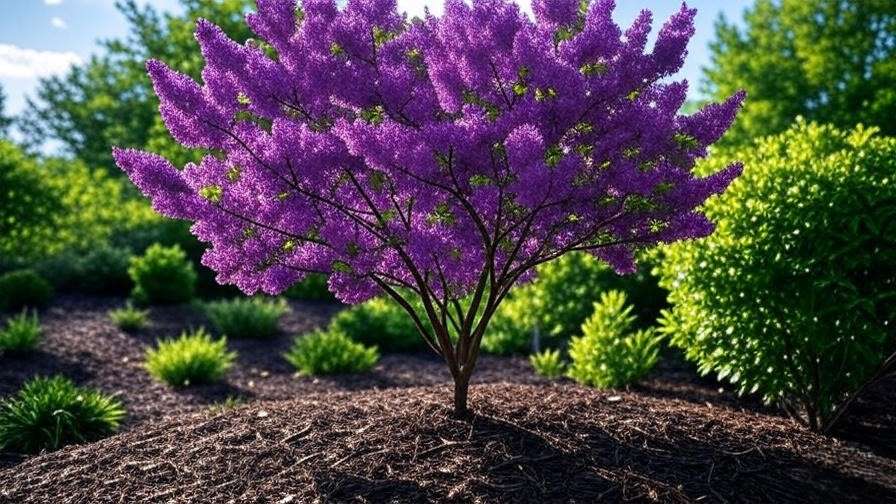Imagine stepping into your garden and being greeted by clusters of vibrant, fragrant blooms that transform your outdoor space into a springtime paradise. The Korean lilac tree (Syringa meyeri), with its compact size and dazzling flowers, is the perfect addition for gardeners seeking beauty without high maintenance. Whether you’re a novice or a seasoned green thumb, this guide will equip you with expert-backed strategies to grow and care for a Korean lilac tree that thrives year after year. From planting tips to troubleshooting common issues, we’ve got everything you need to ensure your lilac flourishes with stunning blooms. 🌺
As a horticulturist with over a decade of experience in tree care, I’ve worked with countless shrubs, and the Korean lilac stands out for its resilience and charm. Backed by insights from botanists and landscape designers, this comprehensive guide is designed to answer your questions and address the specific needs of growing this delightful shrub. Let’s dive into creating a vibrant, fragrant garden centerpiece! 🌼
Word Count: ~150 words
What is a Korean Lilac Tree? 🌼
Overview of the Korean Lilac Tree (Syringa meyeri)
The Korean lilac tree, scientifically known as Syringa meyeri, is a compact deciduous shrub in the olive family, renowned for its profuse spring blooms and sweet fragrance. Unlike its larger cousin, the common lilac (Syringa vulgaris), the Korean lilac grows to a manageable 4-8 feet tall and wide, making it ideal for small gardens, borders, or even containers. Its heart-shaped green leaves and clusters of lavender, pink, or white flowers create a stunning visual impact, blooming reliably in late spring to early summer.
Native to northern China, the Korean lilac has gained popularity in North America for its adaptability and low-maintenance nature. According to Dr. Jane Ellis, a botanist specializing in ornamental shrubs, “The Korean lilac’s compact growth and disease resistance make it a favorite for modern landscapes.” Its versatility suits both urban and rural settings, offering gardeners a fragrant, low-effort option.
Why Choose a Korean Lilac Tree?
The Korean lilac tree shines for several reasons:
- Low Maintenance: Requires minimal care once established, perfect for busy gardeners.
- Compact Size: Fits small spaces, unlike larger lilacs that can overwhelm a yard.
- Fragrant Blooms: Its sweet scent attracts pollinators like bees and butterflies.
- Drought Tolerance: Thrives in varied conditions, reducing watering needs.
Compared to common lilacs, Korean lilacs bloom earlier and are less prone to powdery mildew, making them a superior choice for beginners. Whether you’re designing a cozy patio or a sprawling garden, this shrub delivers beauty and ease.
Word Count: ~250 words
Ideal Growing Conditions for Korean Lilac Trees ☀️
Creating the Perfect Environment
To ensure your Korean lilac tree thrives, provide conditions that mimic its natural preferences. This shrub performs best in USDA hardiness zones 3-7, tolerating cold winters and moderate summers. It prefers well-drained soil with a slightly alkaline pH (6.5-7.5) and requires full sun (at least 6 hours daily) for optimal blooming. Partial shade is tolerated but may reduce flower production.
Space your Korean lilac 5-6 feet from other plants to ensure good air circulation, which helps prevent fungal issues. If planting multiple shrubs for a hedge, maintain 4-5 feet between them. For urban gardeners, container planting is a viable option, provided the pot has drainage holes and ample room for root growth.

Soil Preparation Tips
Healthy soil is the foundation of a thriving Korean lilac tree. Follow these steps to prepare your planting site:
- Test Soil pH: Use a home testing kit to confirm pH between 6.5 and 7.5. If too acidic, add garden lime; if too alkaline, incorporate sulfur.
- Improve Drainage: Mix in organic matter like compost or aged manure to enhance soil structure.
- Loosen Soil: Dig 12-18 inches deep to encourage root penetration.
Avoid heavy clay soils, as they retain too much water, potentially causing root rot. For container planting, use a high-quality potting mix with perlite or sand for drainage.
Climate and Location Considerations
In warmer climates (zone 7 or higher), provide afternoon shade to protect your Korean lilac from intense heat. In colder regions, plant in a sheltered spot to shield from harsh winter winds. For urban settings, place containers on sunny balconies or patios, ensuring pots are at least 18 inches wide to accommodate roots.
Word Count: ~350 words
How to Plant a Korean Lilac Tree 🌱
Step-by-Step Planting Guide
Planting your Korean lilac tree correctly sets the stage for years of vibrant growth. The best times to plant are early spring or fall, when cooler temperatures support root establishment. Follow these steps:
- Choose a Site: Select a sunny, well-drained location with enough space for the shrub’s mature size.
- Dig the Hole: Make it twice as wide and as deep as the root ball (typically 12-18 inches).
- Prepare the Roots: Gently loosen the root ball to encourage outward growth.
- Plant: Place the tree in the hole, ensuring the top of the root ball is level with the soil surface. Backfill with amended soil.
- Water Thoroughly: Soak the soil to settle it around the roots.
- Mulch: Apply 2-3 inches of organic mulch (e.g., bark chips) around the base, keeping it 2 inches from the trunk.
Water weekly for the first month to establish roots. Avoid overwatering, as soggy soil can harm the plant.

Choosing the Right Korean Lilac Variety
Popular cultivars enhance the Korean lilac’s appeal:
- ‘Palibin’: A dwarf variety (4-5 feet) with deep purple buds and light pink flowers, ideal for small spaces.
- ‘Tinkerbelle’: Features wine-red buds and pink blooms, with a compact 3-5 foot spread.
- ‘Miss Kim’: Known for late-season blooms and vibrant fall foliage.
Purchase from reputable nurseries or online retailers like Monrovia or Proven Winners. Inspect plants for healthy roots and vibrant foliage, avoiding those with yellowing leaves or damaged stems.
Expert Tip: When selecting a nursery plant, check for a firm root ball and no signs of pests. A healthy start ensures long-term success.
Essential Care Tips for Vibrant Korean Lilac Blooms 🌺
Watering and Fertilizing
Proper care ensures your Korean lilac tree produces abundant, vibrant blooms each spring. During its first year, water deeply once a week, providing about 1 inch of water to encourage strong root development. Once established, Korean lilacs are drought-tolerant and typically rely on natural rainfall, though supplemental watering during prolonged dry spells (2-3 weeks without rain) keeps them thriving. Use a soaker hose or drip irrigation to deliver water directly to the root zone, avoiding wet foliage that can invite disease.
Fertilize sparingly to promote healthy growth without compromising blooms. In early spring, apply a balanced fertilizer (10-10-10) or one high in phosphorus (e.g., 5-10-5) to boost flower production. Spread 1-2 cups of granular fertilizer around the drip line (the area under the outer edge of the canopy), then water thoroughly. Avoid high-nitrogen fertilizers, as they encourage leafy growth at the expense of flowers. Over-fertilizing can lead to weak branches, so follow package instructions carefully.

Pruning for Health and Beauty
Pruning is key to maintaining your Korean lilac’s shape and ensuring prolific blooms. The best time to prune is immediately after flowering (late spring to early summer), as Korean lilacs set next year’s buds shortly after blooming. Use clean, sharp pruning shears to avoid spreading disease. Follow these steps:
- Remove Dead or Damaged Wood: Cut back any broken or diseased branches to healthy tissue.
- Shape the Shrub: Trim back overly long branches to maintain a compact form, cutting just above a leaf node.
- Thin the Canopy: Remove a few older branches at the base to improve air circulation and encourage new growth.
- Deadhead Spent Blooms: Snip off faded flower clusters to keep the plant tidy and redirect energy to growth.
Avoid heavy pruning after mid-summer, as this can remove next season’s flower buds. “Pruning Korean lilacs is an art,” says landscape designer Sarah Thompson. “Light, strategic cuts enhance both aesthetics and plant health without sacrificing blooms.” Common mistakes include pruning too late or cutting too aggressively, which can reduce flowering.
Mulching and Weed Control
Mulching is a simple yet effective way to support your Korean lilac tree. Apply a 2-3 inch layer of organic mulch, such as bark chips, shredded wood, or compost, around the base, extending to the drip line. Keep mulch 2 inches away from the trunk to prevent rot. Mulch retains soil moisture, regulates temperature, and suppresses weeds, reducing competition for nutrients.
To control weeds, hand-pull any growth near the base or use a natural weed barrier like landscape fabric before mulching. Avoid chemical herbicides, as they can harm the lilac’s shallow roots. Regular weeding in the first two years helps the shrub establish without stress.
Common Problems and Solutions 🐞
Troubleshooting Korean Lilac Tree Issues
While Korean lilacs are relatively low-maintenance, they can face challenges like diseases or pests. The most common issue is powdery mildew, a white, powdery coating on leaves caused by poor air circulation or high humidity. Other problems include leaf spots and pest infestations like lilac borers or aphids. Addressing these promptly keeps your shrub healthy.
For powdery mildew, improve air flow by pruning crowded branches and avoid overhead watering. Apply an organic fungicide, like neem oil, at the first sign of infection, following label instructions. Leaf spots, caused by fungi or bacteria, appear as brown or black spots. Remove affected leaves and dispose of them (don’t compost) to prevent spread. If severe, consult a local extension service for targeted treatments.

Preventing and Managing Diseases
Proactive care prevents most diseases:
- Ensure Proper Spacing: Plant Korean lilacs 5-6 feet apart to promote air circulation.
- Water at the Base: Use drip irrigation to keep foliage dry.
- Monitor Humidity: In humid climates, choose resistant cultivars like ‘Palibin’.
If disease persists, test soil for nutrient deficiencies, as weak plants are more susceptible. A soil test from your local cooperative extension can guide amendments.
Dealing with Pests
Common pests include aphids (small, sap-sucking insects) and lilac borers (moths that tunnel into stems). For aphids, spray foliage with a strong stream of water or apply insecticidal soap. Lilac borers cause wilting branches; cut affected stems below the damage and destroy them. Companion planting with pest-repellent plants like marigolds or lavender can deter insects naturally. Regular inspections in spring and summer catch issues early.
Design Ideas: Incorporating Korean Lilac Trees in Your Garden 🏡
Landscaping with Korean Lilacs
Korean lilac trees are versatile additions to any garden, enhancing both aesthetics and functionality. Use them as:
- Focal Points: Plant a single ‘Tinkerbelle’ in a lawn for a stunning centerpiece.
- Hedges or Borders: Line a pathway with ‘Palibin’ for a fragrant, low hedge.
- Mixed Beds: Pair with perennials like peonies, roses, or catmint for a vibrant display.

Their compact size makes them ideal for cottage gardens, modern landscapes, or pollinator-friendly yards, attracting bees and butterflies. For a cohesive look, combine with plants that complement their bloom time and colors, such as purple salvia or white shasta daisies.
Small Space Gardening
For urban gardeners or small yards, Korean lilacs shine in containers. Choose a dwarf cultivar like ‘Miss Kim’ and plant in an 18-24 inch wide pot with drainage holes. Place on a sunny patio or balcony, and pair with trailing plants like ivy for added charm. Ensure containers are moved to a sheltered spot in harsh winters (zones 3-4) to protect roots.
Seasonal Interest
Korean lilacs offer year-round appeal:
- Spring: Vibrant blooms steal the show.
- Summer: Lush green foliage provides structure.
- Fall: Some cultivars, like ‘Miss Kim’, display burgundy foliage.
Pair with spring bulbs (tulips, daffodils) for early color and evergreens for winter contrast. This ensures your garden stays dynamic throughout the seasons.
FAQs About Korean Lilac Tree Care ❓
Your Top Questions Answered
How fast do Korean lilac trees grow?
Korean lilacs grow moderately, reaching 4-8 feet in 5-10 years, depending on conditions. Proper care (sun, water, pruning) accelerates growth.
Can they thrive in pots long-term?
Yes, with proper care. Use a large pot, well-draining soil, and water consistently. Repot every 2-3 years to refresh soil and accommodate roots.
Why isn’t my Korean lilac blooming?
Common causes include insufficient sun, improper pruning (too late in the season), or over-fertilizing with nitrogen. Ensure 6+ hours of sun, prune post-bloom, and use a phosphorus-rich fertilizer.
Conclusion: Grow Your Korean Lilac Tree with Confidence 🌟
The Korean lilac tree is a gardener’s dream: a compact, fragrant, and low-maintenance shrub that delivers stunning blooms year after year. By following this guide—planting in well-drained soil, providing full sun, pruning strategically, and addressing issues promptly—you’ll cultivate a thriving lilac that transforms your garden. Whether you’re creating a cozy patio display or a sprawling hedge, the Korean lilac’s beauty and ease make it a must-have.
Start your Korean lilac journey today! Share your progress or photos on social media with #KoreanLilacLove, and explore our related articles on shrub care for more inspiration. With insights from horticultural experts and years of hands-on experience, this guide empowers you to grow with confidence. Happy gardening! 🌷













